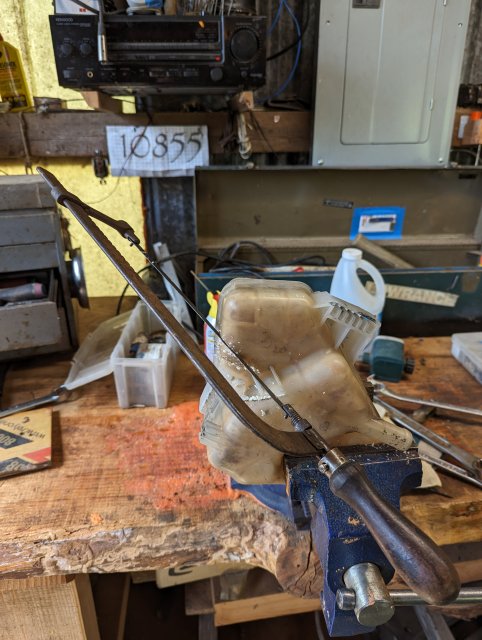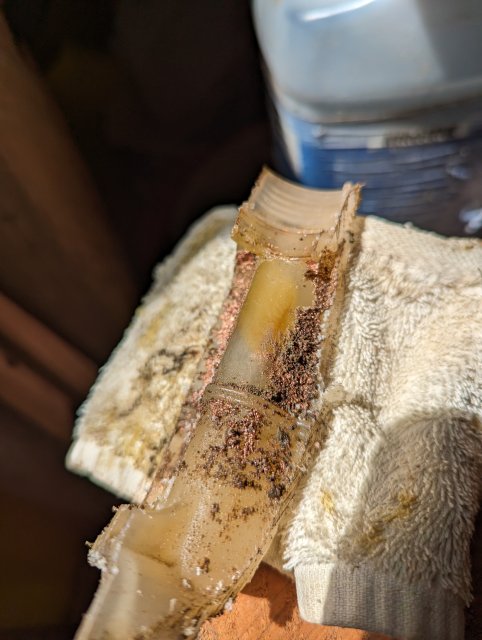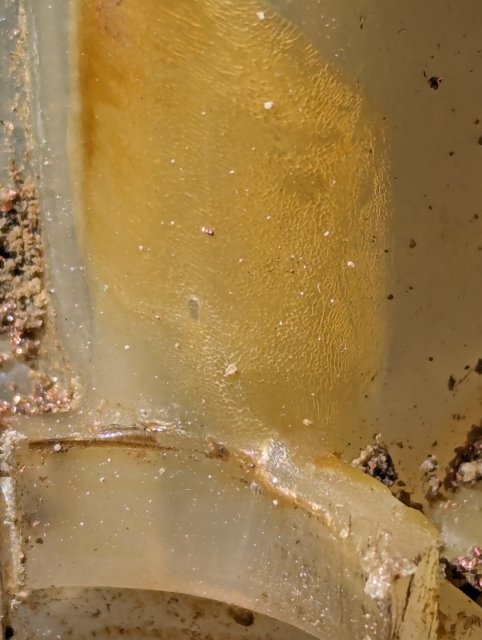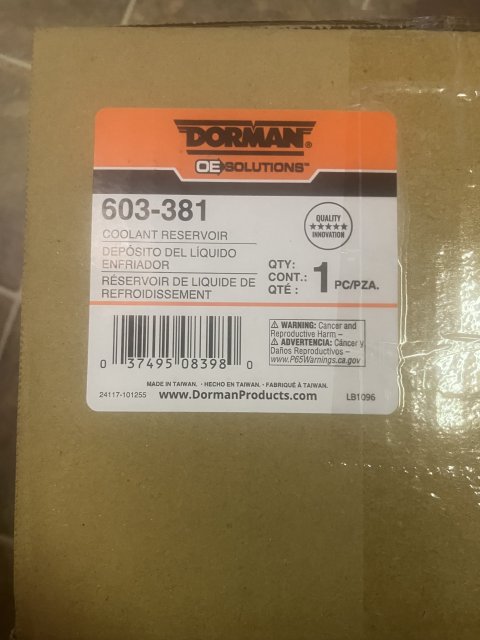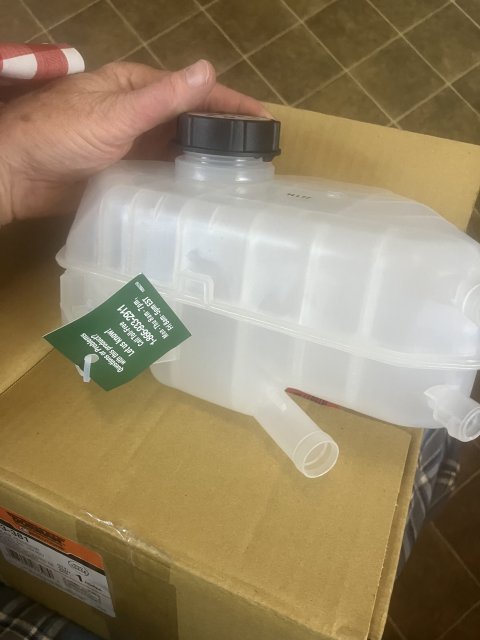- Messages
- 5
- Likes
- 4
- City
- Portland
- State
- OR
- Country
- United States
- What I Drive
- 2014 , SFE Ford fiesta
At the end of this story I replace my coolant expansion tank and cap - and also the burp line. And for a new burp line I used rubber tubing from Napa and not the $70 part.
My 1 liter fiesta with about 130,000 mi on it almost overheated a couple years ago. It got pretty low on coolant but never empty. Turned out to be the connection between the turbocharger return line and the connector where it goes into the expansion tank. I replaced the hose with the original equipment part at a cost of around $50. I discovered this problem when I noticed that the fan ran a little bit too long. One morning after I got to work. I checked the coolant. It was low. Not empty.
11 months later it failed again. The part was replaced under warranty at Ford. And then 6 months later I got into the car one morning and it ran rough for about 3 seconds. So I'm thinking head gasket leak and I look at the coolant tank and it's low. But once again not empty. For the life of me, I cannot see anywhere that coolant is coming out of the cooling system. There is not coolant in the oil. I add some more coolant over the course of a few days. One day I get home and it won't start. Crank all you want but it won't start. Some kind of system interlock that the car has built into its computer. You only get so many chances.
It took me a long time to find out that the expansion tank was bad. And to actually see the place where it was bad. I had to take a saw and cut a triangle out of the side of the tank. When the tank gets over pressurized for any reason, the blow-by goes out a secret passage to the bottom of the expansion tank - out a little tiny mouth that is underneath the 21 PSI radiator cap. After the fluid leaves the expansion tank it falls onto what I'm going to go ahead and call the frame and rolls towards the back of the car and you never see it. And if you see a puddle on the street you assume it's from the air conditioning cuz that's where it lands. But mostly it doesn't land because there isn't that much of it. It's a tiny bit over a large number of cycles.
I used a $28 aftermarket expansion tank that fit perfectly. I broke that burp line getting the tank off and no surprise that ridiculous nylon tubing that they used. And once it was shattered it was just completely useless.
I was going to use Tygon tubing and there may be a correct Tygon tubing to use in this situation but my host at the Napa store insisted the temperature range of the Tygon was too low and I should use this rubber tubing that he came up with instead. And he sold me a couple tiny little pinch clamps that let me use the original connectors that plug into the expansion tank and the side of the engine.
I had to take a close-up photograph of the hidden leak on the inside outside of the tank. As a whole, the plastic is still intact, but there are hundreds of little fractures. See the photographs.
And back to that head leak into the cylinder. You've seen these head gaskets before if you've taken the engines apart and sometimes even if the gasket isn't blowing, you can see where coolant was making it from the cooling passageway almost into the cylinder, but not quite. What I'm saying is I think there is a tiny possibility sometimes that you can plug that leak without going all the way to the head gasket. Because it's not really a leak. It's more of a weep.
Got the suggestion from a service manager to use K-Seal.
Got a couple thousand miles on it now. Seems fine.
Hope this helps somebody.
My 1 liter fiesta with about 130,000 mi on it almost overheated a couple years ago. It got pretty low on coolant but never empty. Turned out to be the connection between the turbocharger return line and the connector where it goes into the expansion tank. I replaced the hose with the original equipment part at a cost of around $50. I discovered this problem when I noticed that the fan ran a little bit too long. One morning after I got to work. I checked the coolant. It was low. Not empty.
11 months later it failed again. The part was replaced under warranty at Ford. And then 6 months later I got into the car one morning and it ran rough for about 3 seconds. So I'm thinking head gasket leak and I look at the coolant tank and it's low. But once again not empty. For the life of me, I cannot see anywhere that coolant is coming out of the cooling system. There is not coolant in the oil. I add some more coolant over the course of a few days. One day I get home and it won't start. Crank all you want but it won't start. Some kind of system interlock that the car has built into its computer. You only get so many chances.
It took me a long time to find out that the expansion tank was bad. And to actually see the place where it was bad. I had to take a saw and cut a triangle out of the side of the tank. When the tank gets over pressurized for any reason, the blow-by goes out a secret passage to the bottom of the expansion tank - out a little tiny mouth that is underneath the 21 PSI radiator cap. After the fluid leaves the expansion tank it falls onto what I'm going to go ahead and call the frame and rolls towards the back of the car and you never see it. And if you see a puddle on the street you assume it's from the air conditioning cuz that's where it lands. But mostly it doesn't land because there isn't that much of it. It's a tiny bit over a large number of cycles.
I used a $28 aftermarket expansion tank that fit perfectly. I broke that burp line getting the tank off and no surprise that ridiculous nylon tubing that they used. And once it was shattered it was just completely useless.
I was going to use Tygon tubing and there may be a correct Tygon tubing to use in this situation but my host at the Napa store insisted the temperature range of the Tygon was too low and I should use this rubber tubing that he came up with instead. And he sold me a couple tiny little pinch clamps that let me use the original connectors that plug into the expansion tank and the side of the engine.
I had to take a close-up photograph of the hidden leak on the inside outside of the tank. As a whole, the plastic is still intact, but there are hundreds of little fractures. See the photographs.
And back to that head leak into the cylinder. You've seen these head gaskets before if you've taken the engines apart and sometimes even if the gasket isn't blowing, you can see where coolant was making it from the cooling passageway almost into the cylinder, but not quite. What I'm saying is I think there is a tiny possibility sometimes that you can plug that leak without going all the way to the head gasket. Because it's not really a leak. It's more of a weep.
Got the suggestion from a service manager to use K-Seal.
Got a couple thousand miles on it now. Seems fine.
Hope this helps somebody.
Attachments
-
2.3 MB Views: 2
-
2.5 MB Views: 2
-
1.5 MB Views: 2

